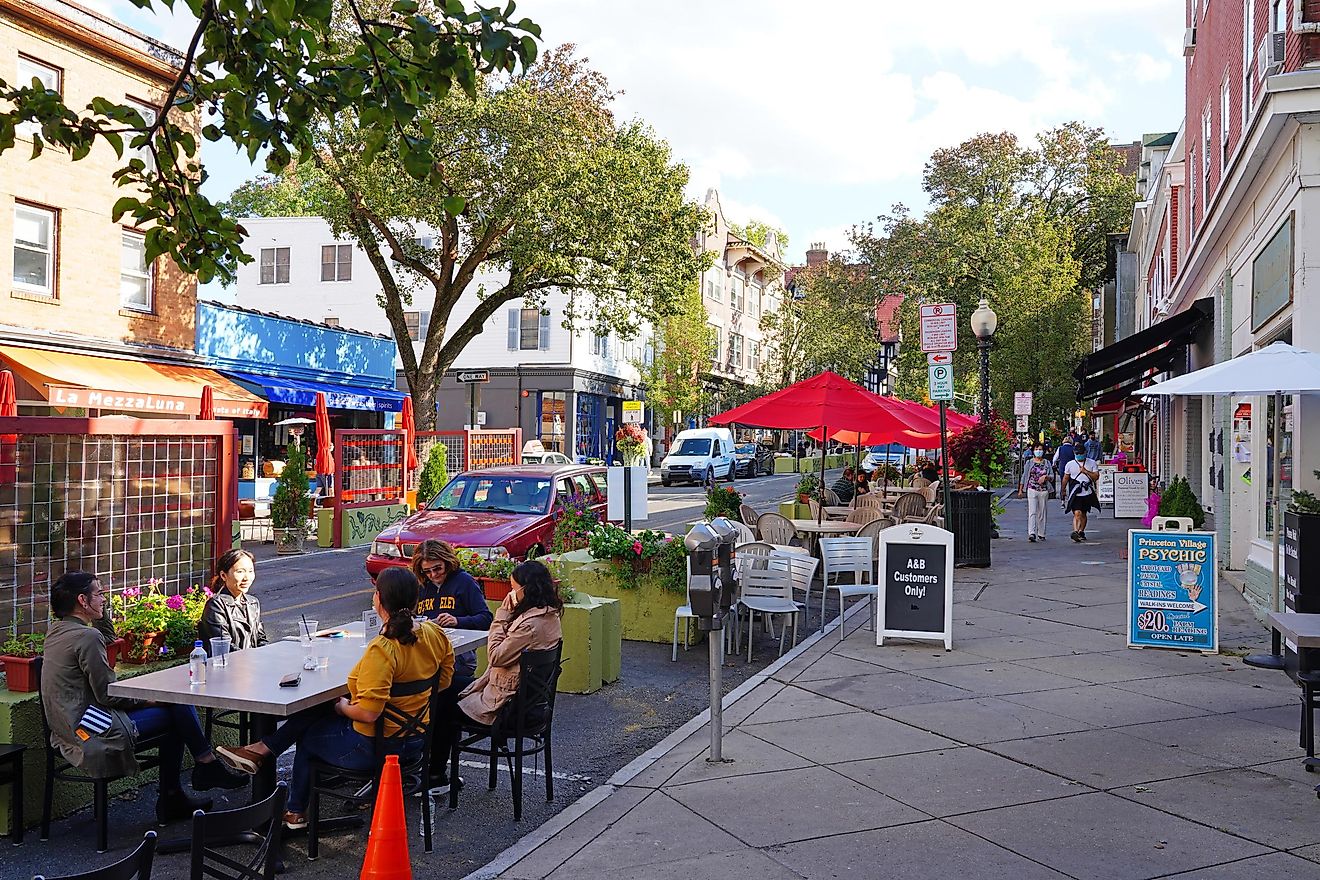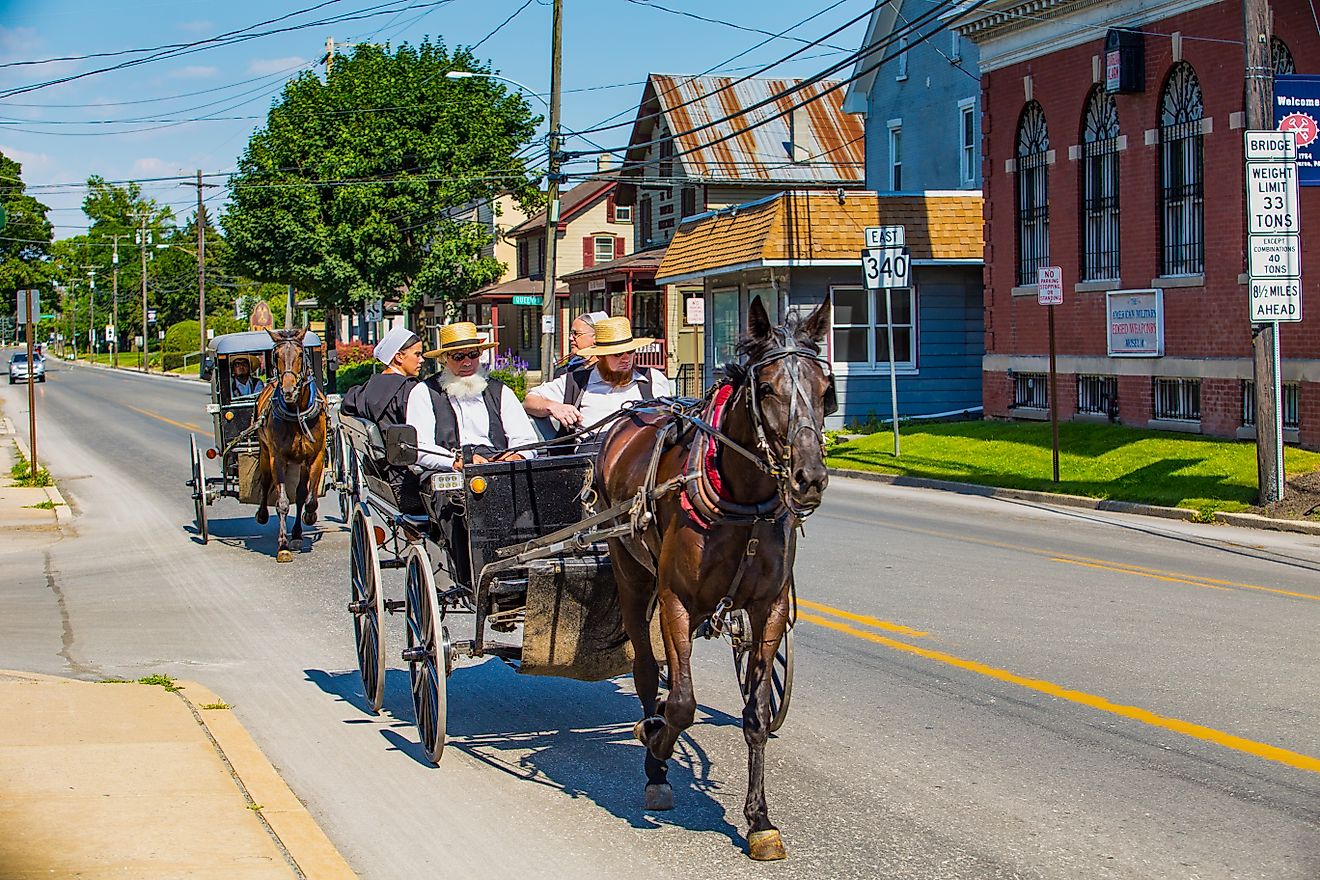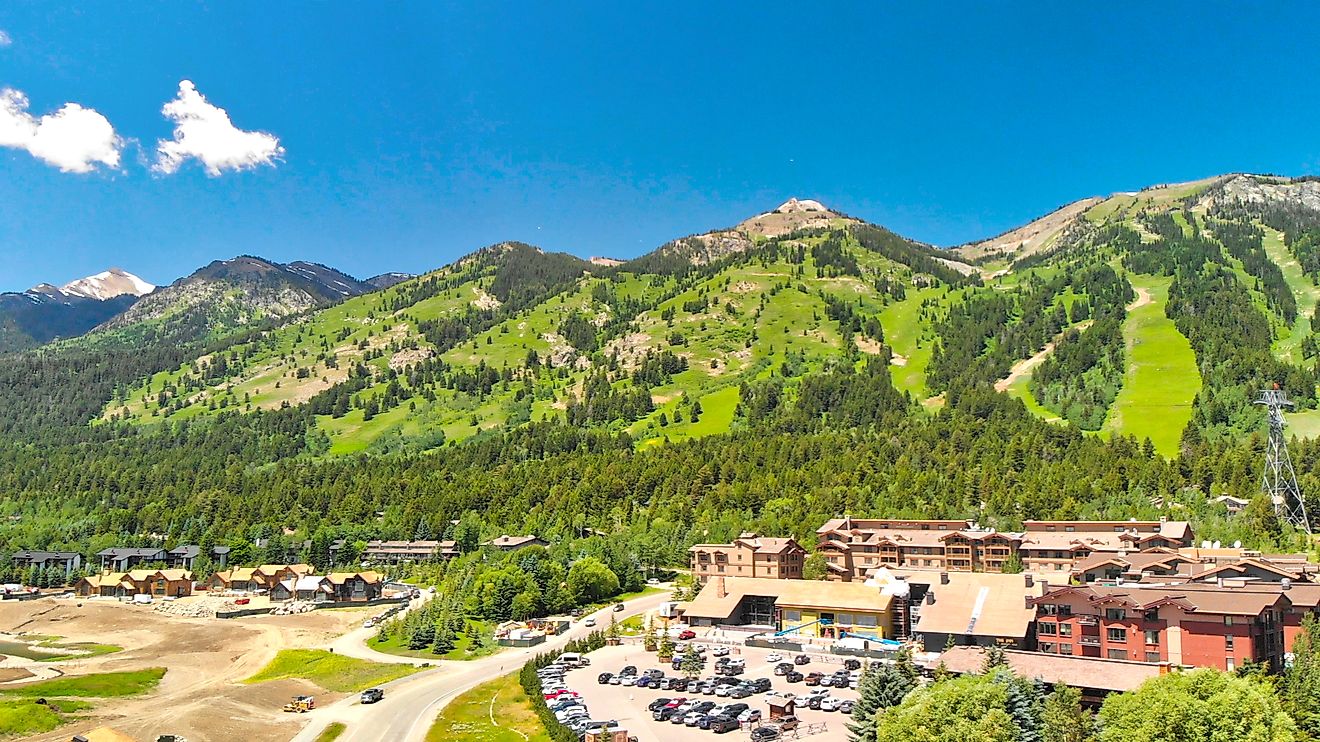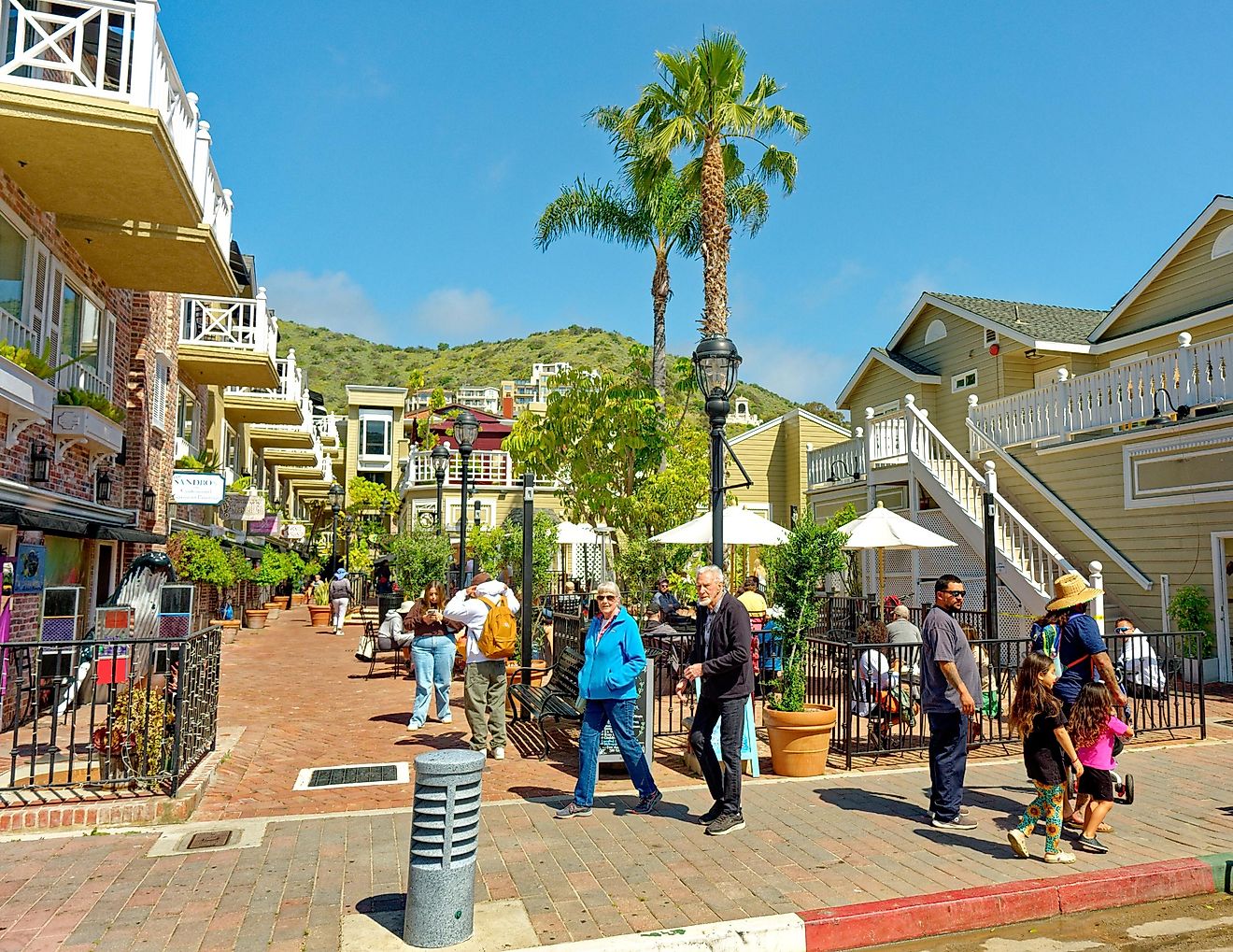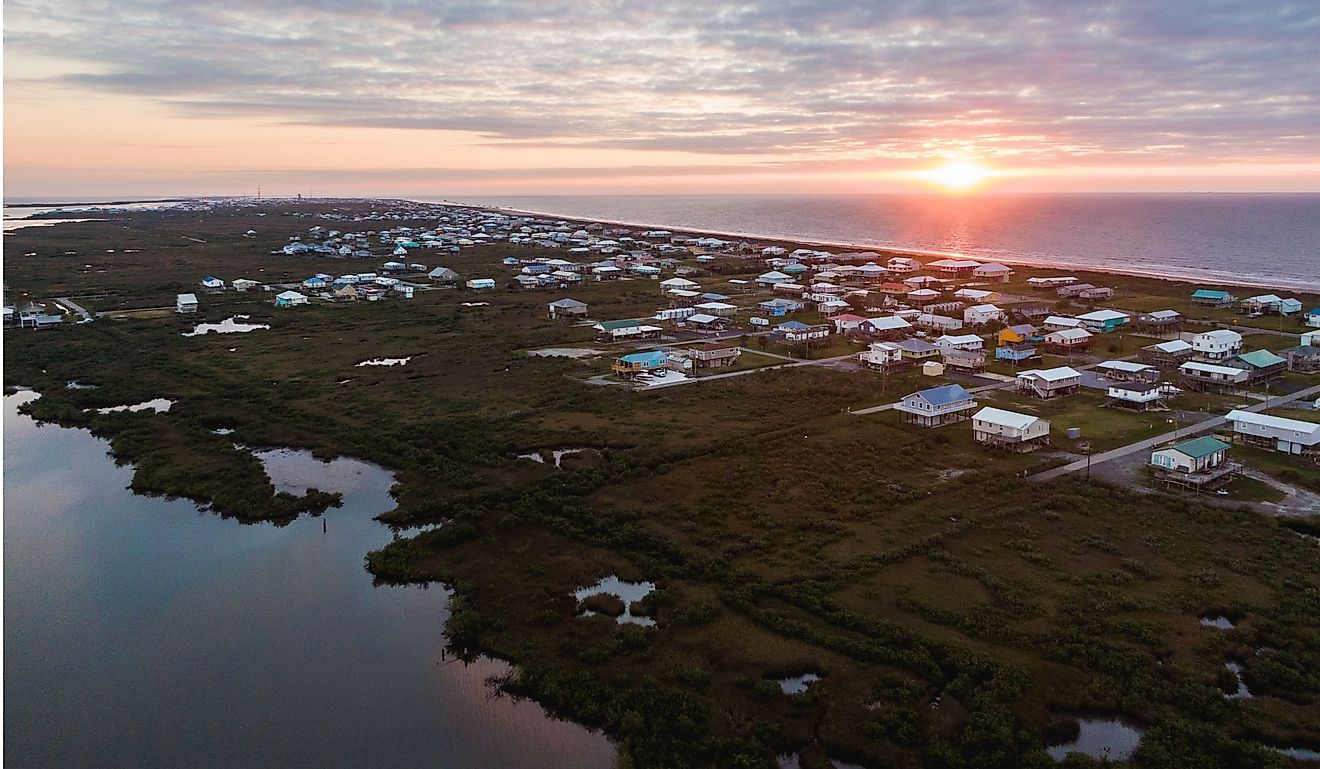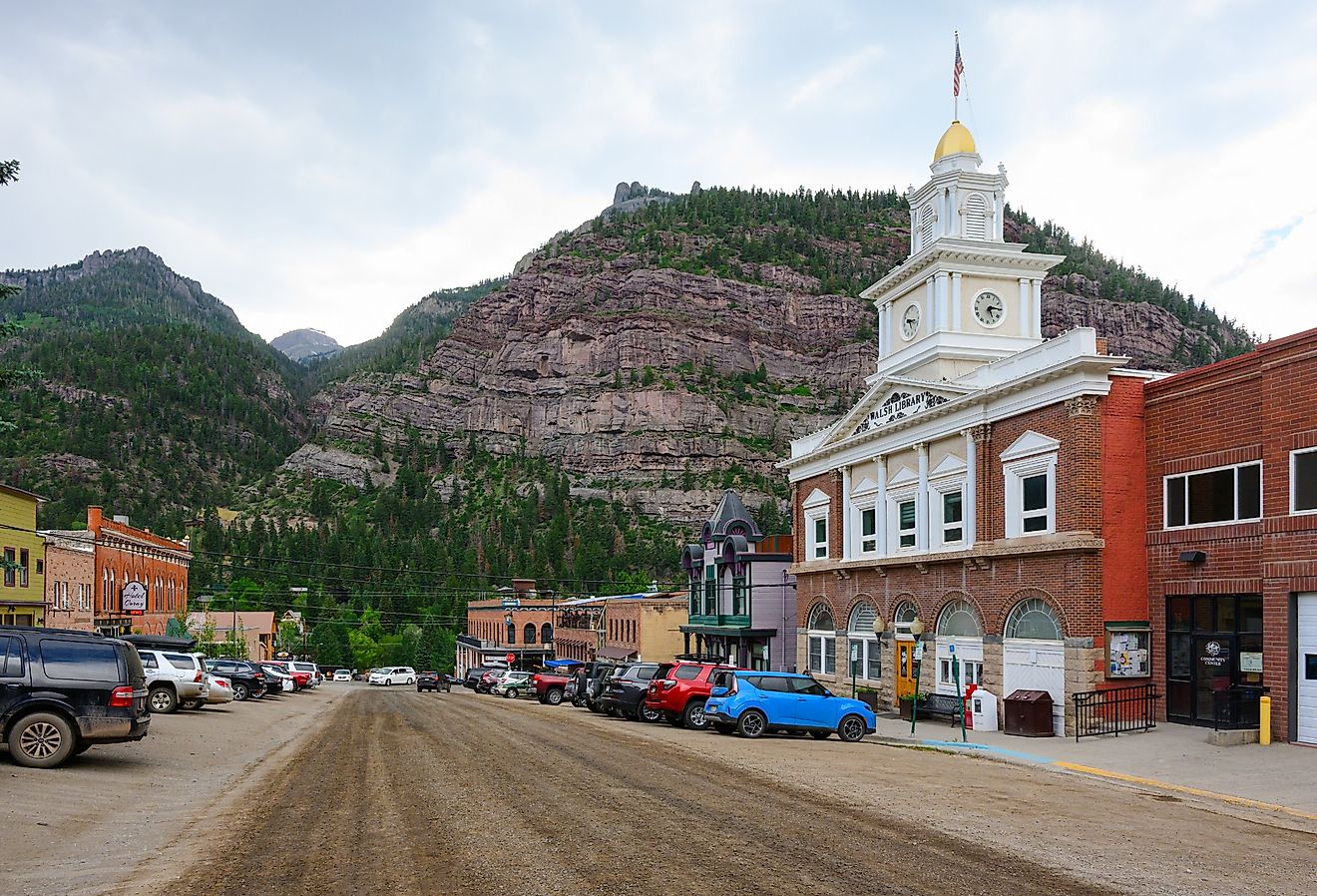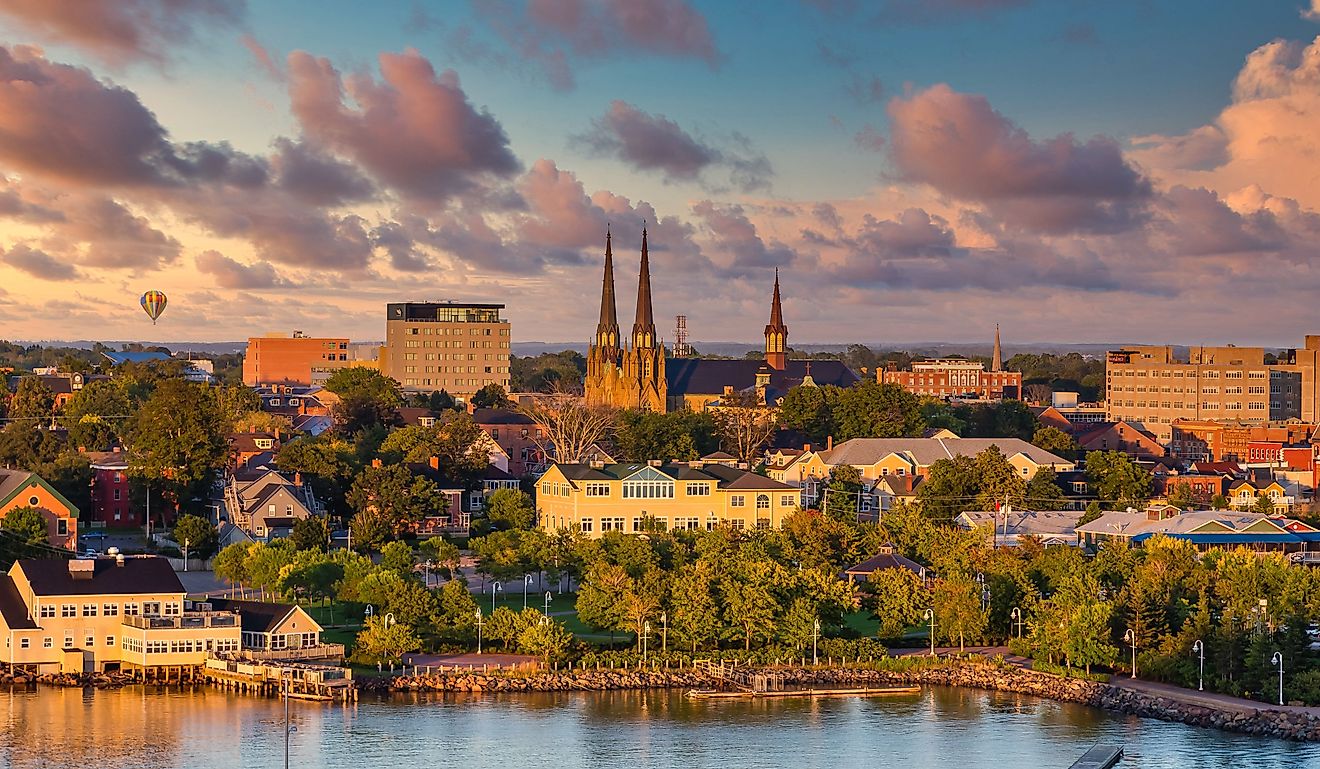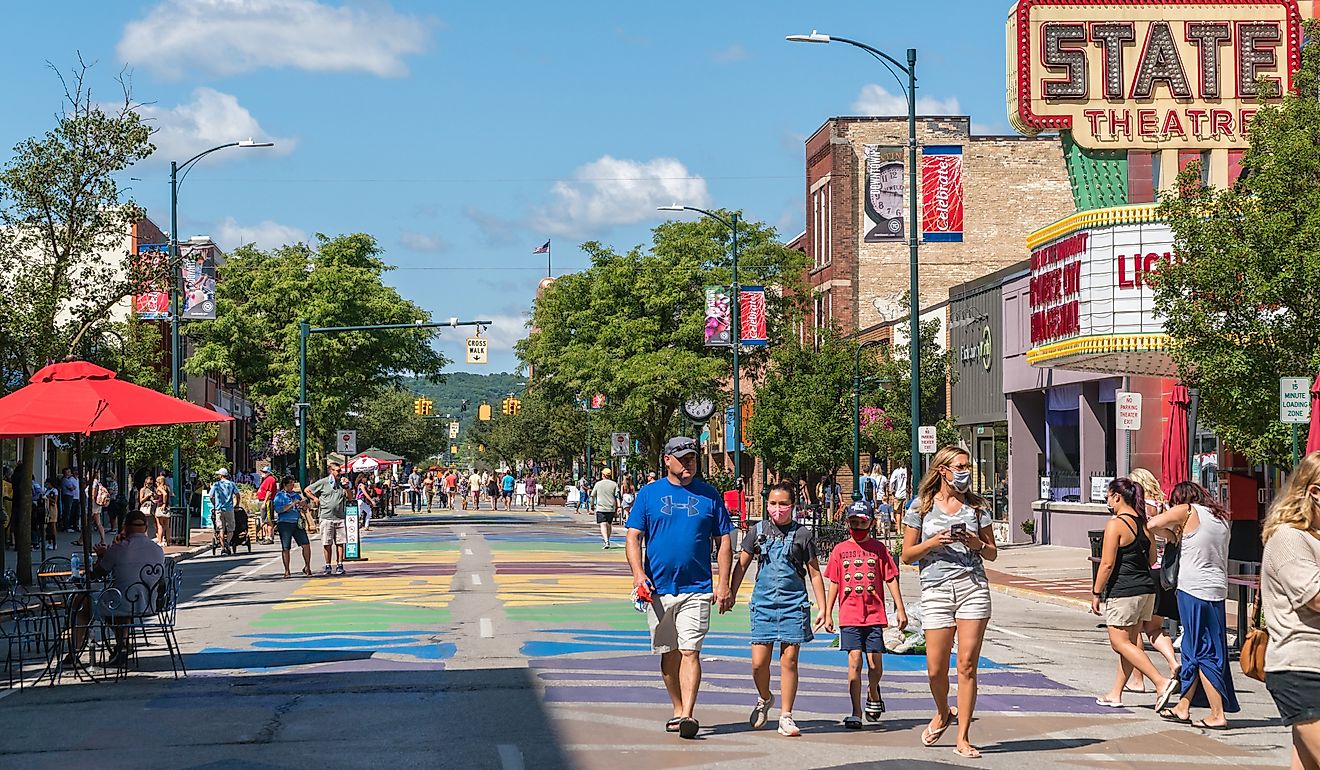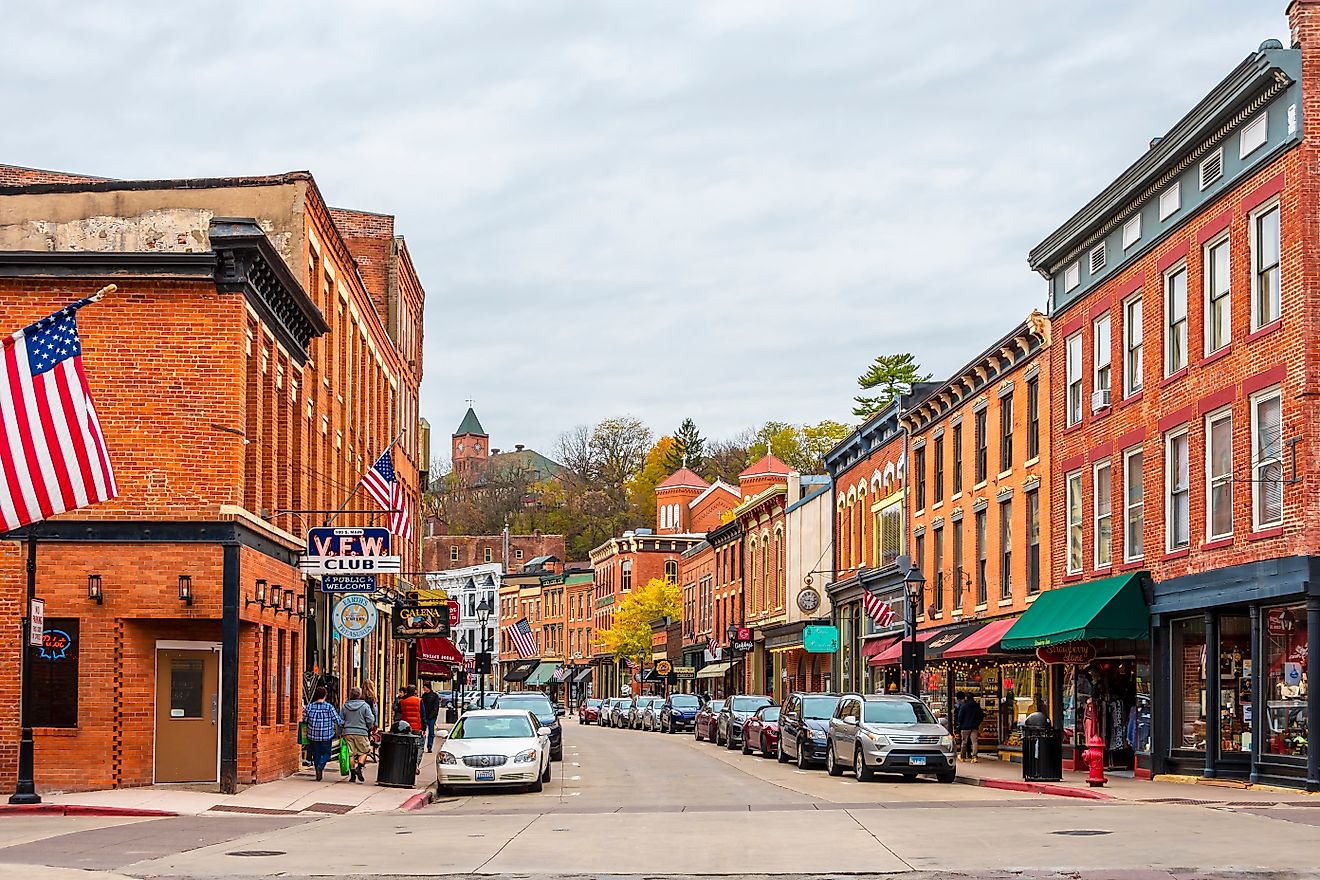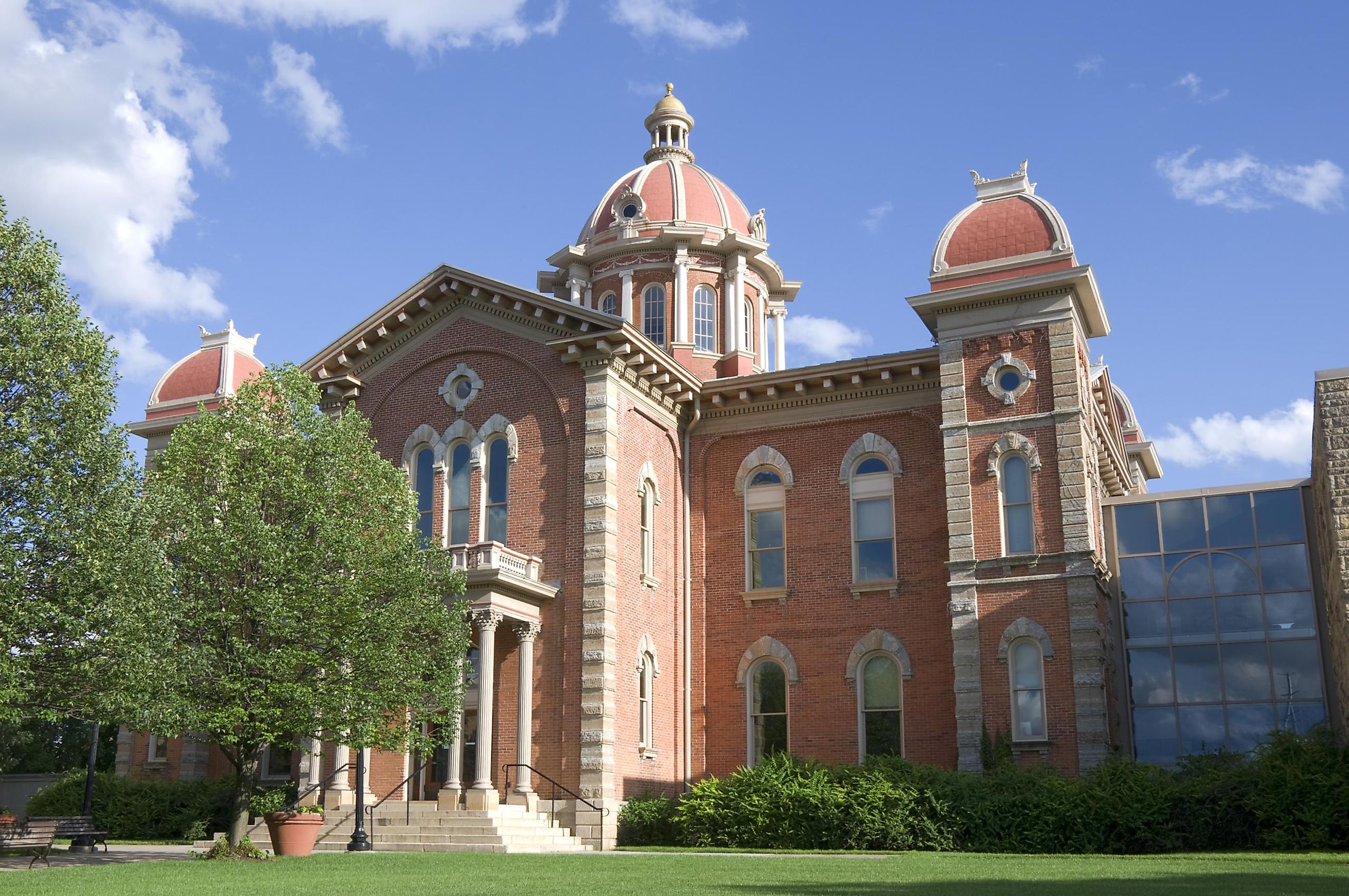
These Small Towns in Minnesota Have the Best Historic Districts
Minnesota gets its name from a Sioux word meaning “sky-tinted water.” People have contemplated the sky’s reflection in the Minnesota River since the Woodland Period of the 11th Century BCE. After Europeans settled, the legend of Paul Bunyan carving the land’s “one thousand lakes” began to capture the imaginations of Minnesotans and Northern North Americans for generations. Escape to a place of legends in a state that boasts some of the nation’s most wonderous Historic Districts.
New Ulm
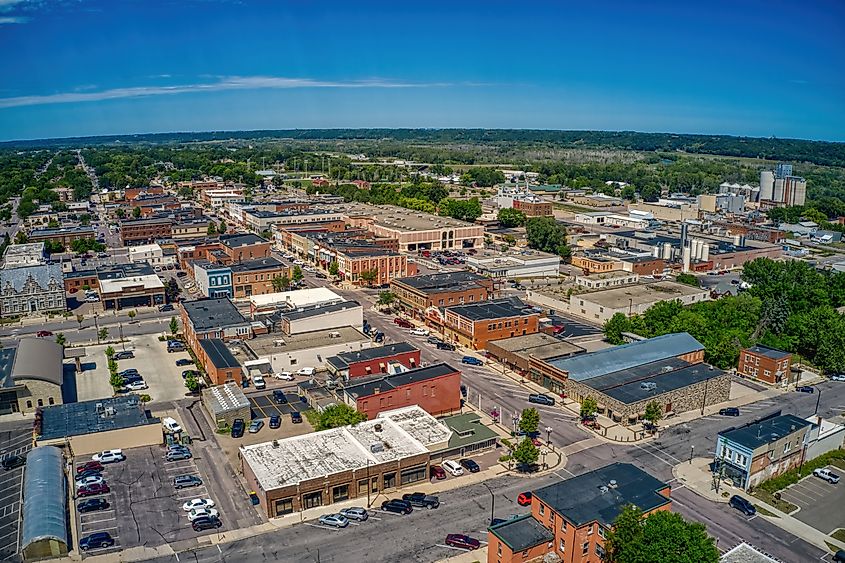
Aerial view of New Ulm, Minnesota, reflecting its German-inspired town layout and architecture.
Just over 14,000 people live in New Ulm, named for a German city on the Danube River. The New Ulm Historic District has survived a great fire, a devastating tornado, and the US-Dakota War in 1862. The edifices exude the hope of the two founding German settler groups who wanted to create a paradise in what a French fur trader described to them as an “American Wilderness.” The city’s website features sound bites of local historians describing what the buildings have seen through the centuries. Visitors can get a full lay of the land by trekking to the top of Center Street Hill and climbing the spiral staircase of the Hermann Monument. The shops of New Ulm are one of the few places in the region to find an authentic, handcrafted cuckoo clock. The town’s costumed Narren (gnomes) appear for every major festival and, as per policy, love to dance with strangers.
Lake City
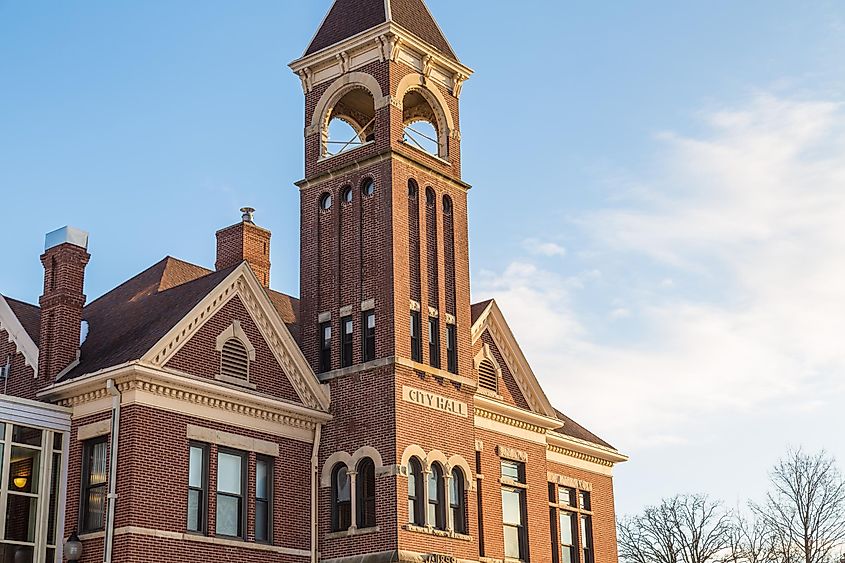
City Hall in Lake City, Minnesota, displaying the municipal building's design and setting. By Tony Webster from Minneapolis, Minnesota, United States - City Hall - Lake City, Minnesota, CC BY-SA 2.0, https://commons.wikimedia.org/w/index.php?curid=68498592
Lake City has been home to the Dakota people for thousands of years. Contact with European settlers began as early as 1654. Just over 5,000 people live in the birthplace of waterskiing. Ralph Samuelson pioneered the sport on Lake Pepin. Stroll through Lake City’s five-block Historic District with wooden residential architecture that is increasingly difficult to find nationwide. The Lake City Historical Society website has a complete guide of all the houses. Bring history home at the Lake Pepin Pearl Button Company, an antique shop in an immaculate brick and wood building built in 1866.
Bemidji

Just under 16,000 people live in Bemidji as of 2022. Most of Beltrami County’s listings in the National Register of Historic Places are in Bemidji. Learn about all of them at the Beltrami County Historical Society housed in Bemidji’s 1912 Great Northern Depot. Take in a show at the Historic Chief Theater. The theater’s Paul Bunyan Playhouse is the oldest professional summer stock company in Minnesota. The experience of strolling through Bemidji’s historic downtown is enhanced by the sculptures that punctuate the landscape. A team of volunteers with the Bemidji Community Arts Center maintains the downtown sculpture walk. Bemidji claims to be the home of the nation’s first Paul Bunyan and Babe the Ox statues, erected for a 1937 winter carnival.
Hastings
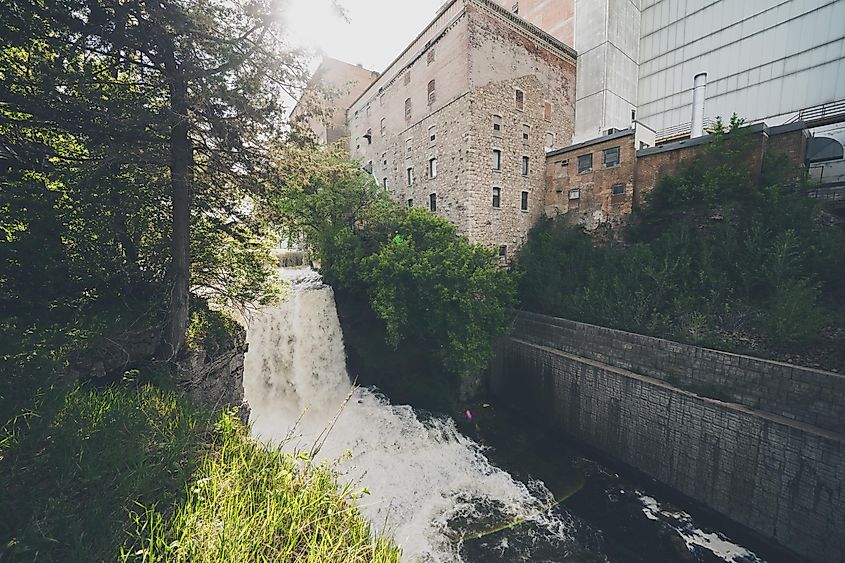
Vermillion Falls Park features an urban waterfall beside an old factory in Hastings, Minnesota.
Hastings has just shy of 22,000 people who love their historic downtown area that runs along the Mississippi River. In total, Hastings has 60 buildings on the National Register of Historic Places. Saunter and gaze at West Second Street Residential Historic District’s thirteen architectural gems built 1857-1890. Walking tours can be arranged Monday-Friday, 9-3. Frank Lloyd Wright designed the Fasbender Clinic, built in 1957. The building could be mistaken for a giant turtle with its copper roof that extends to the ground. Play with a bulldozer or a 26-ton excavator at Hastings’s Extreme Sandbox.
Winona
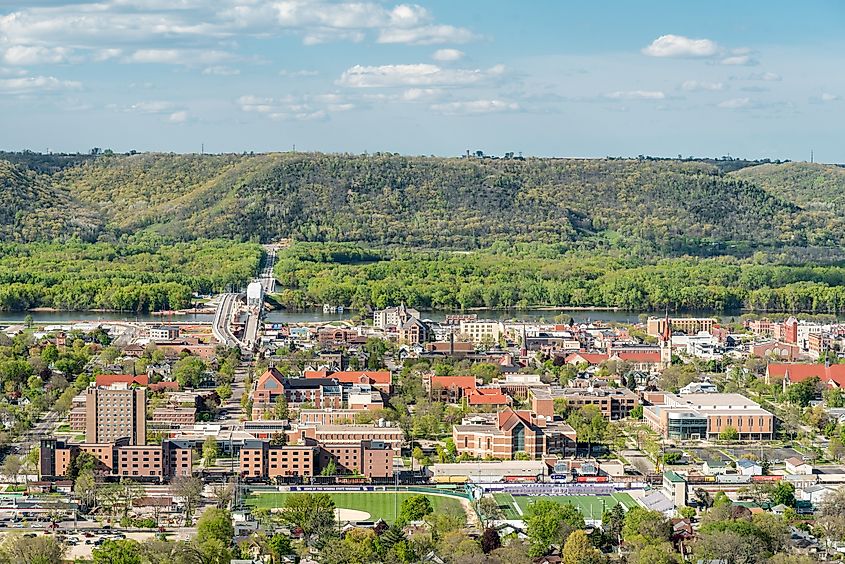
Bird's eye view looking east over Winona, Minnesota, showcasing the landscape and town layout.
Winona has a grand total of three major historic districts. The town’s 25,800 people meet their shopping needs in the downtown area which encompasses the East Second Street and Third Street Commercial Historic Districts. Pop by the Winona National Bank when it’s sunny to watch the rays illuminate the iconic Tiffany stained glass. Download brochures from the city’s website for a complete guide through Winona’s historic treasures. Winona is the original home of the Leonard Corporation which began publishing sheet music in 1947. Winona’s most distinguishing landmark is Sugarloaf Bluff. It has been on the National Register of Historic Places since 1990 but has been a revered landmark for much longer. The Dakota referred to it as the cap of their storied Chief Wabasha.
Owatonna

Owatonna is a small town located in southern Minnesota.
Owatonna’s 26,400 residents get to play and shop in a 75-building Commercial Historic District. All of the properties were built between 1871 and the 1950s. Pick up a copy of the Historic Walking Tour Guide Brochure at the Owatonna Area Chamber of Commerce & Tourism for a complete overview of the town’s rare architectural gems. Look no further than Owatonna’s Farmer’s National Bank for a textbook example of Prairie School architecture. Catch a show at the Little Theater of Owatonna which features an induction hearing loop system for hearing-impaired theatergoers.
Litchfield
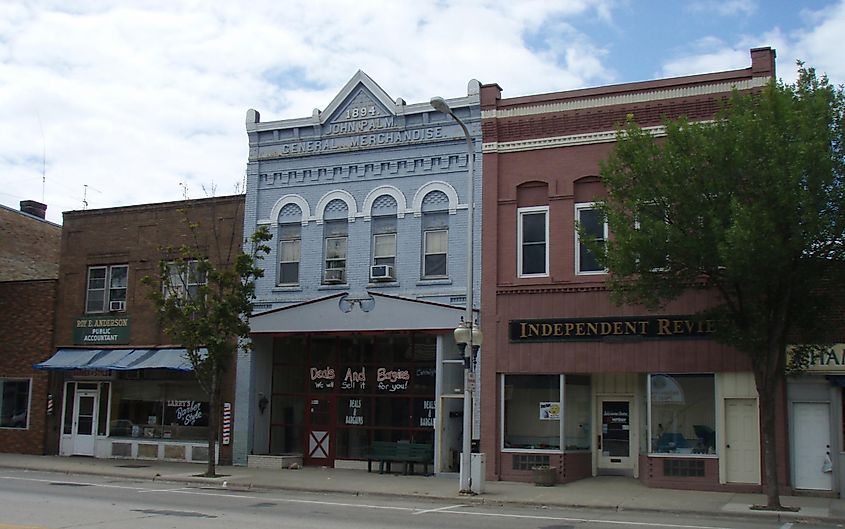
Litchfield Commercial Historic District in Litchfield, Minnesota. By Elkman - Own work, CC BY-SA 3.0, https://commons.wikimedia.org/w/index.php?curid=7389834
Litchfield’s Historic Commercial District has 36 contributing buildings between 1882 and 1940. Today, 6,600 dedicated residents maintain the town’s extraordinary charm. Litchfield’s Grand Army of the Republic Hall, built by Civil War veterans, is one of the few of its type remaining in the US. It was added to the National Register of Historic Places in 1975. William T. Towner designed the Renaissance Revival-style Litchfield Opera House, which officially opened in 1900. After many renovations throughout the decades, the Opera House still features year-round programming. The crown jewel of architect Richard Upjohn’s Carpenter Gothic portfolio is Litchfield’s Trinity Episcopal Church, founded in 1871.
Embracing Minnesota's Legacy
In conclusion, Minnesota's small towns are not just keepers of history but vibrant communities where the past and present coalesce. From the architectural marvels to the legendary tales of yore, each town offers a unique slice of the state's heritage. As you wander through these historic districts, you're walking the same paths that generations before have tread, each step a story, each building a monument to the enduring spirit of Minnesota.
